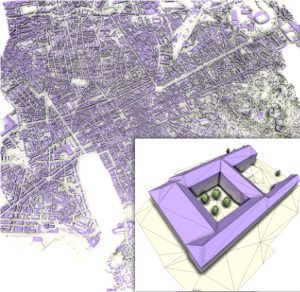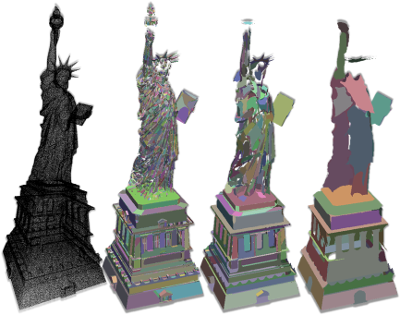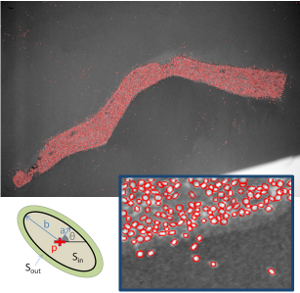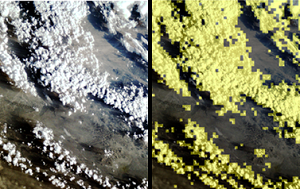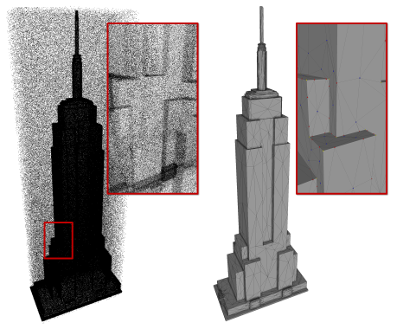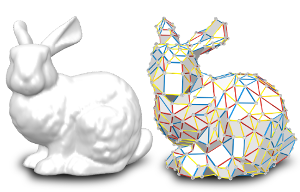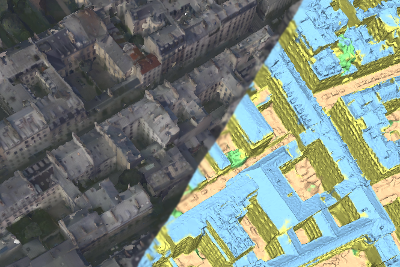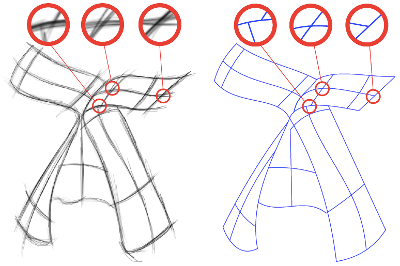|
Zhenyu Zhu |
Object vectorization in remote sensing data [PhD., 2024-2027]
|
|
Marion Boyer |
Building reconstruction from satellite imagery [PhD., 2022-2025]
|
|
Mulin Yu |
Remeshing BIM models [PhD., 2019-2022]
|
|
Gaetan Bahl |
Low-power neural networks [PhD., 2019-2022]
|
|
Julien Vuillamy |
City reconstruction from multi-sourced data [PhD.,
2018-2021, supervised with Pierre Alliez]
|
|
Muxingzi Li |
Indoor modeling [PhD., 2018-2021]
|
|
Jean-Philippe Bauchet |
Urban scene reconstruction [PhD., 2016-2019]
|
|
Oussama Ennafii |
Geometric quality of city models [PhD.,
2016-2019, supervised with Clement Mallet]
|
|
Hao Fang |
Scale-space exploration [PhD.,
2016-2019]
|
|
Jean-Dominique Favreau |
3D modeling from sketches [PhD.,
2014-2017, supervised with Adrien Bousseau]
|
|
Dorothy Duan |
Semantized elevation maps [PhD.,
2013-2016]
|
|
Sven Oesau |
3D Indoor reconstruction [PhD.,
2012-2015, supervised with Pierre Alliez]
|
|
Yannick Verdie
|
Urban modeling from point clouds
[PhD., 2010-2013]
|
|
Mulin Yu |
pliant surface remeshing [Master,
2019, supervised with Pierre Alliez]
|
|
Alex Auvolat |
Surface reconstruction by point processes [Master,
2018, supervised with Adrien Bousseau]
|
|
Leihan Chen |
Floor maps vectorization [Master,
2017]
|
|
Hao Fang |
Multiscale Primitive detection [Master,
2015]
|
|
Jean-Dominique Favreau |
3D modeling from sketches [Master,
2014, supervised with Adrien Bousseau]
|
|
Paul Seron |
Primitive-driven mesh approximation [Master,
2011, supervised with Pierre Alliez]
|
|
Ioan Dragan
|
Parallelization of Markov Random Field
[Master 2010-2011]
|
|
Parmeet Bhatia
|
Urban library
of 3D unitary elements [Master, 2010]
|
|
Marouene Amri
|
Classification of Lidar data
[Master, 2010]
|
|
Yann Bhogal
|
Survey on roof typology [Master,
2006] |
|
Pierre Trontin
|
Building footprint vectorization
[Master, 2005] |
